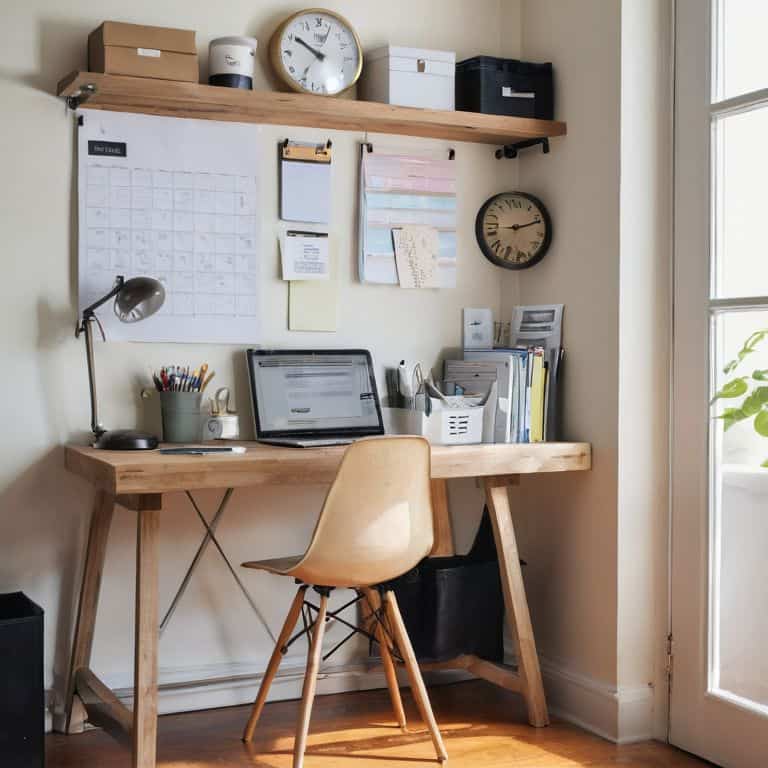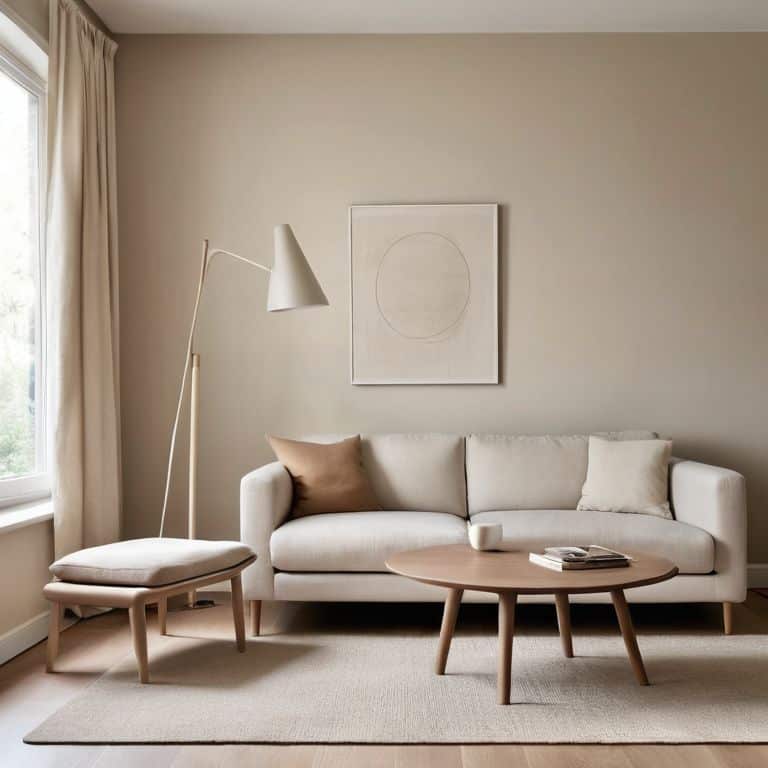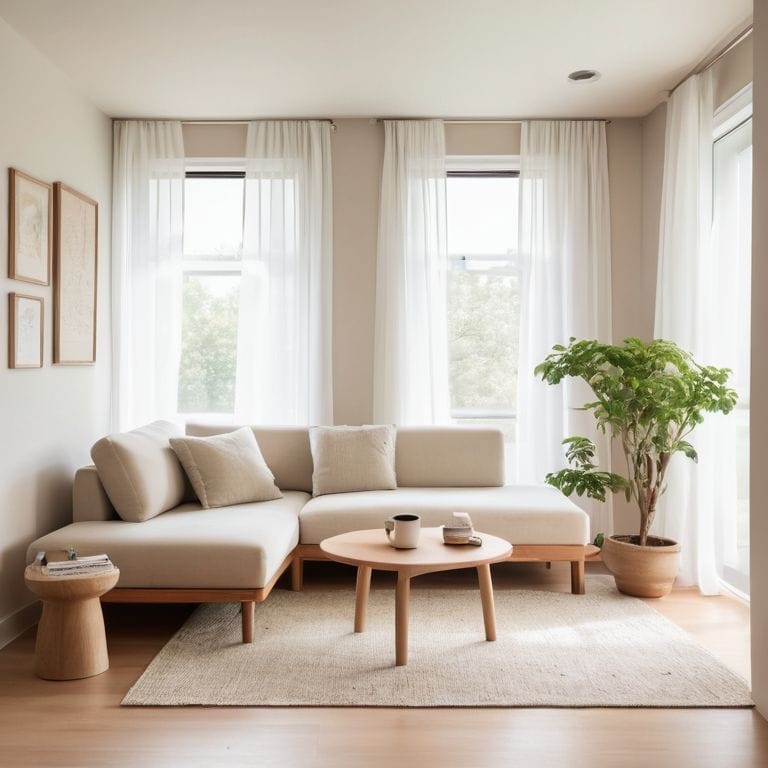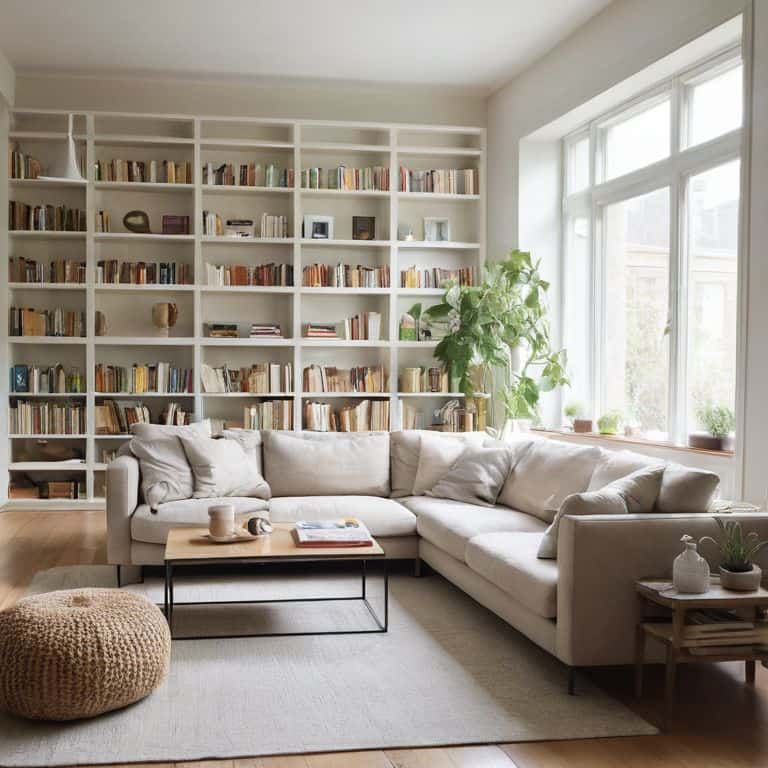I still remember the day I realized that organizing a small space wasn’t just about tidying up, but about creating a sense of calm in the midst of chaos. As someone who’s worked with numerous clients struggling to make the most of their tiny apartments or cluttered rooms, I’ve come to understand that the common myth “you can’t have a peaceful space if it’s small” is simply not true. In fact, I believe that small spaces can be incredibly liberating when approached with the right mindset. By focusing on the essentials and letting go of the non-essential, you can transform even the coziest of areas into a serene oasis.
As we dive into the world of organizing a small space, I want to assure you that this article will offer practical, no-nonsense advice on how to make the most of your tiny haven. You’ll learn how to prioritize what matters, create functional systems, and cultivate a sense of peace that permeates every aspect of your life. My goal is to empower you with the knowledge and tools necessary to turn your small space into a true sanctuary, one that reflects your personality and provides a sense of calm in a busy world. By the end of this guide, you’ll be equipped with the skills to create a space that not only looks great but also feels amazing to be in.
Table of Contents
- Guide Overview: What You'll Need
- Step-by-Step Instructions
- Organizing a Small Space
- Mindful Minimalism Space Saving Furniture Designs
- Sanctuary in Miniature Small Apartment Decorating Ideas
- Embracing Serenity: 5 Essential Tips for Organizing a Small Space
- Embracing Serenity: 3 Key Takeaways for Your Small Space Sanctuary
- Embracing Serenity in Compact Spaces
- Creating Your Sanctuary: A Journey to Inner Peace
- Frequently Asked Questions
Guide Overview: What You'll Need

Total Time: 2 hours 30 minutes
Estimated Cost: $50 – $100
Difficulty Level: Intermediate
Tools Required
- Tape Measure (for measuring space)
- Level (for ensuring shelves are straight)
- Drill (with screwdriver and drill bits)
- Utility Knife (with extra blades)
- Pencil and Paper (for planning and noting dimensions)
Supplies & Materials
- Shelving Units (custom or pre-made to fit space)
- Storage Bins (various sizes for organization)
- Label Maker (for labeling storage bins)
- 2-in x 4-in lumber (for creating custom shelves or brackets)
- Wall Anchors (for securing shelves to walls)
Step-by-Step Instructions
- 1. First, let’s start by clearing the clutter from your small space. This means taking everything out of the room, sorting items into categories, and getting rid of anything you don’t need or use. It’s essential to be ruthless during this process, as the less you have, the more manageable your space will be. I like to think of it as an interview process for your belongings, where you ask each item if it has a purpose or a place in your life.
- 2. Next, take some time to assess your space and think about how you want to use it. Consider the activities you’ll be doing in the room, the type of furniture you need, and the overall atmosphere you want to create. For example, if you’re organizing a small bedroom, you might want to prioritize a calming environment that promotes relaxation. Make a list of your needs and priorities to guide your decision-making process.
- 3. Now it’s time to assign a home for each item you’ve decided to keep. This means designating a specific place for everything, from your clothes and books to your kitchen utensils and cleaning supplies. The goal is to create a system where everything has its place, making it easier to find what you need and maintain your space. I recommend using labels and signs to help you and others navigate your space.
- 4. Once you’ve assigned a home for each item, it’s time to optimize your storage. This might involve investing in storage containers, shelves, or furniture with built-in storage. The key is to maximize your vertical space and use every available nook and cranny. Consider using stackable containers or hanging organizers to keep your belongings organized and out of the way.
- 5. To maintain your newly organized space, it’s essential to establish daily habits that help you stay on track. This might include setting aside a few minutes each day to tidy up, putting away items after use, or scheduling regular deep-cleaning sessions. By incorporating these habits into your daily routine, you’ll be able to maintain your space with minimal effort and keep your mind clear.
- 6. As you’re organizing your space, don’t forget to consider the aesthetics. Your space should be a reflection of your personality and style, so choose furniture and decor that bring you joy and create a peaceful atmosphere. Remember, the goal is to create a sanctuary that promotes relaxation and calmness, so prioritize elements that contribute to this feeling, such as soft lighting or soothing colors.
- 7. Finally, take a step back and evaluate your progress. Take note of what’s working and what areas still need improvement. Don’t be too hard on yourself if your space isn’t perfect – the goal is to create a functional and peaceful environment that supports your well-being. By following these steps and maintaining your space over time, you’ll be able to enjoy the long-term benefits of a clutter-free and organized home.
Organizing a Small Space

As we delve into the world of small space organization, it’s essential to consider the psychological impact of our surroundings. A cluttered environment can lead to a cluttered mind, making it difficult to relax and unwind. By implementing space saving furniture designs, we can create a sense of calm and serenity, even in the smallest of areas. For instance, opting for a minimalist living room layout can help reduce visual noise and promote a sense of tranquility.
When it comes to maximizing storage, utilizing corner spaces effectively is crucial. This can be achieved by installing custom shelves or using corner-specific storage solutions. Additionally, incorporating hidden storage solutions for tiny homes can help keep clutter at bay, creating a sense of openness and airiness. By doing so, we can create a peaceful ambiance that allows us to recharge and refocus.
To take your small space organization to the next level, consider exploring optimal closet organization systems. A well-organized closet can help reduce stress and make mornings more efficient. By investing in a customized closet system, you can create a sense of control and order, which can have a positive impact on your mental well-being. This, in turn, can help you create a sanctuary that promotes relaxation and rejuvenation, making it the perfect retreat from the outside world.
Mindful Minimalism Space Saving Furniture Designs
As I reflect on my own journey with carpentry, I’ve come to realize the importance of intentional design in small spaces. Mindful minimalism is about more than just decluttering – it’s about selecting pieces that serve multiple purposes. For instance, a storage ottoman or a desk with built-in shelving can be a game-changer. These space-saving furniture designs not only help maintain a sense of openness but also promote a sense of calm, allowing you to focus on what truly matters.
By incorporating such thoughtful designs into your space, you’ll begin to notice a profound impact on your mental clarity. The key is to strike a balance between functionality and aesthetics, ensuring that each piece contributes to the overall sense of serenity in your home.
Sanctuary in Miniature Small Apartment Decorating Ideas
As we delve into organizing a small space, it’s essential to consider the aesthetic elements that can elevate it into a sanctuary. I often find inspiration in my bonsai trees – the way each branch is carefully pruned to create a sense of harmony and balance. Similarly, in small apartment decorating, every piece of furniture or decor should serve a purpose or bring joy. By applying this mindset, we can transform even the smallest of spaces into a tranquil oasis.
To achieve this, I recommend starting with a neutral palette and introducing pops of color through plants, artwork, or rugs. This approach creates a sense of calm while allowing your personality to shine through. By thoughtfully curating each item, you’ll create a space that not only feels serene but also reflects your unique character.
Embracing Serenity: 5 Essential Tips for Organizing a Small Space
- Start with a blank slate: Begin by completely clearing out the space to get a sense of its true potential and to decide what’s truly essential to keep
- Designate zones: Divide the space into functional areas, such as a reading nook or a workspace, to create a sense of purpose and organization
- Choose multi-functional furniture: Invest in pieces that serve more than one purpose, like a storage ottoman or a desk with built-in shelving, to maximize space efficiency
- Implement the ‘one in, one out’ rule: To maintain your newly organized space, adopt a policy where you get rid of an old item every time you bring a new one into the space
- Schedule regular ‘interviews’ with your belongings: Periodically go through your possessions and ask yourself if each item still serves a purpose or brings you joy, to ensure your space remains clutter-free and peaceful
Embracing Serenity: 3 Key Takeaways for Your Small Space Sanctuary
By embracing the concept that every object should have a ‘purpose or a place’, you can begin to declutter your space and your mind, creating a sense of calm and tranquility in even the smallest of areas
Mindful minimalism, combined with space-saving furniture designs, can transform your small space into a functional and peaceful retreat, proving that size is not a barrier to serenity
Through the simple act of organizing your physical space, you can experience a profound impact on your mental well-being, turning your home into a true sanctuary that nurtures both body and soul
Embracing Serenity in Compact Spaces
The beauty of organizing a small space lies not in the physical act of tidying, but in the profound impact it has on our mental landscape – for in the stillness of a well-ordered room, we find the serenity to breathe, to think, and to be.
Nathan Reed
Creating Your Sanctuary: A Journey to Inner Peace

As we’ve explored the world of organizing a small space, it’s clear that the journey is just as important as the destination. We’ve discussed the importance of mindful minimalism, and how space saving furniture designs can help create a sense of calm and serenity. By applying these principles, you can transform your small space into a sanctuary in miniature, a place where you can escape the chaos of the outside world and reconnect with your inner self. Remember, it’s not just about decluttering and organizing, but about creating a space that nourishes your mind and soul.
As you embark on this journey, keep in mind that organizing a small space is not a one-time task, but a continuous process. It’s about creating habits and routines that help you maintain a sense of order and harmony in your life. So, take a deep breath, be patient, and trust the process. With time and practice, you’ll find that your small space has become a reflection of your inner peace, a place where you can truly be yourself and find solace in the midst of a busy world. And that, my friend, is the greatest reward of all.
Frequently Asked Questions
How can I determine which items to keep and which to discard when organizing a small space?
To determine what to keep, I recommend ‘interviewing’ each item. Ask yourself, ‘What purpose does it serve?’ or ‘Does it bring me joy?’ Be honest, and consider the 80/20 rule: 80% of the time, you likely only use 20% of your belongings. This simple exercise helps clarify what’s truly essential in your small space.
What are some creative ways to use vertical space in a small room to maximize storage?
To maximize storage in a small room, I recommend using wall-mounted shelves, storage units, or hooks to keep items off the floor. Consider installing a pegboard or a loft bed with built-in storage to make the most of your vertical space. This will help keep your floor clear and create a sense of calm, while also keeping your belongings organized and within reach.
How can I maintain a sense of openness and airflow in a small, cluttered space after organizing it?
To maintain a sense of openness, consider the ‘breathing room’ concept: leave about 10% of your floor space empty. This visual pause creates a sense of airflow, even in small spaces. Additionally, opt for sheer curtains or blinds to filter natural light, further enhancing the feeling of openness.
